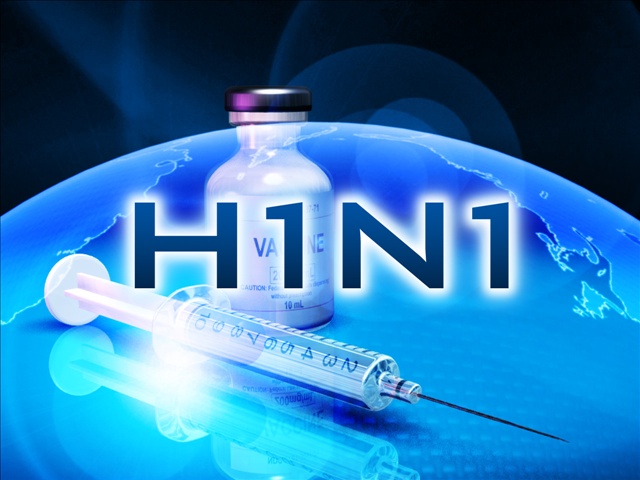
一整個讓人充滿疑問的結果......
The risk for Guillain-Barré syndrome is not increased after use of adjuvanted pandemic influenza (H1N1) 2009 vaccine, but the upper limit does not exclude a potential increase in risk up to 2.7-fold, according to the results of a multinational case-control study reported online July 12 in the BMJ.想多知道一點格林-巴利症候群可以參考下面連結:
Guillain-Barré Syndrome 筆記
"A concern with the pandemic influenza A (H1N1) 2009 vaccine was the possible occurrence of neuroimmunological adverse events, including Guillain-Barré syndrome," write Jeanne Dieleman, senior pharmacoepidemiologist from the Department of Medical Informatics at Erasmus University Medical Center in Rotterdam, the Netherlands, and colleagues. "A more than sevenfold increased risk of Guillain-Barré syndrome was observed with the swine origin influenza A (H1N1) subtype A/NJ/76 vaccine applied in the United States in 1976, when the vaccination campaign had to be discontinued abruptly. Subsequent prospective surveillance studies and retrospective epidemiological studies on seasonal influenza vaccines used in 1978, 1979, 1980, 1992, 1993, and beyond showed no or modest increases (up to twofold) in risk of Guillain-Barré syndrome."
The goal of this case-control study, performed in 5 European countries, was to evaluate the relationship between pandemic influenza A (H1N1) 2009 vaccine and Guillain-Barré syndrome. Patients (n = 104) with Guillain-Barré syndrome or its variant Miller-Fisher syndrome were classified according to the Brighton Collaboration definition and matched to 1 or more control participants by age, sex, index date, and country. The primary study endpoint was the relative risk estimate for Guillain-Barré syndrome after vaccination with pandemic influenza vaccine.
Countries varied substantially in case recruitment and vaccine coverage. Adjuvanted vaccines (Pandemrix and Focetria) were used most commonly. For all countries, the unadjusted pooled risk estimate was 2.8 (95% confidence interval [CI], 1.3 - 6.0). However, vaccination with pandemic influenza vaccine was not associated with a heightened risk for Guillain-Barré syndrome after adjustment for influenza-like illness or upper respiratory tract infection and seasonal influenza vaccination (adjusted odds ratio [OR], 1.0; 95% CI, 0.3 - 2.7). On the basis of the 95% CI, the absolute effect of vaccination could vary from 1 less case of Guillain-Barré syndrome within 6 weeks after vaccination in 1 million people, to up to 3 excess cases.
"The risk of occurrence of Guillain-Barré syndrome is not increased after pandemic influenza vaccine, although the upper limit does not exclude a potential increase in risk up to 2.7-fold or three excess cases per one million vaccinated people," the study authors write. "When assessing the association between pandemic influenza vaccines and Guillain-Barré syndrome it is important to account for the effects of influenza-like illness/upper respiratory tract infection, seasonal influenza vaccination, and calendar time."
Study limitations include the fact that the study was performed in a pandemic situation; under-reporting of cases in the Netherlands; substantial delays in inclusion of cases in Sweden and France; possible residual confounding; and some missing information on vaccination, mostly in control participants.
Editorial: Safety Implications of H1N1 2009 Vaccines
In an accompanying editorial, Frank DeStefano, from the Immunization Safety Office (MS-D26), Division of Healthcare Quality Promotion, National Center for Emerging and Zoonotic Infectious Diseases, Centers for Disease Control and Prevention in Atlanta, Georgia, and colleagues discuss the safety of adjuvanted pandemic influenza A (H1N1) 2009 vaccines.
"Although pandemic influenza A (H1N1) 2009 monovalent vaccines are no longer being used, data on their safety are relevant to current clinical practice because the H1N1 strain in the pandemic vaccine has been incorporated into the currently recommended trivalent seasonal vaccine," the editorialists write. "Most of the trivalent seasonal flu vaccines currently used in Europe do not contain an adjuvant, and no adjuvanted flu vaccines are used in the US. Nonetheless, the safety findings on adjuvanted flu vaccines will be important if such vaccines become more common in the future, whether in seasonal flu vaccines or for the next pandemic."
This study was funded by the European Centre for Disease Prevention and Control. Some of the study authors have disclosed various financial relationships with GSK, SPMSD, Wyeth/Pfizer, Boehringer, Lilly, AstraZeneca, and/or Baxter. The editorialists have disclosed no relevant financial relationships.
根據線上發表於7月12日BMJ期刊的一篇跨國案例控制研究結果,施打2009年H1N1流感疫苗之後,格林-巴利症候群(Guillain-Barre syndrome)的風險並未增加,但是也無法排除風險增加達2.7倍的可能性。
荷蘭鹿特丹Erasmus大學醫學中心醫療資訊系、資深藥物流行病學家Jeanne Dieleman等人寫道,有關2009年H1N1流感疫苗的考量之一為可能發生神經免疫方面的副作用,包括格林-巴利症候群。美國在1976年使用的H1N1 A型新流感、亞型A/NJ/76疫苗中發現,格林-巴利症候群風險增加超過7倍,使得當年的疫苗接種計畫不得不停止。之後對1978、1979、1980、1992、1993年使用的季節性流感疫苗進行後續的前瞻型監控研究以及回溯型流行病學研究,顯示格林-巴利症候群的風險並未增加或僅中度增加(至多達2倍)。
這篇在歐洲5個國家進行的案例控制研究,目標是評估2009年大流行之H1N1流感疫苗與格林-巴利症候群之間的關係,格林-巴利症候群或變異型米勒費雪症候群(Miller Fisher syndrome)病患(n = 104人),根據Brighton協議定義分類,並依據年紀、性別、指標日期和國家加以配對。主要研究終點是估計施打大流行流感疫苗後的格林-巴利症候群相對風險。
各國依據案例募集和疫苗使用程度而有不同。輔助型疫苗(商品名Pandemrix和Focetria)最常被使用。對於各國,未校正之風險估計為2.8 (95%信心區間[CI]為1.3 - 6.0),不過,校正類流感疾病或上呼吸道感染之後,施打大流行流感疫苗和季節性流感疫苗相比,格林-巴利症候群風險並未增加(校正OR為1.0;95% CI為0.3 - 2.7),若依據95% CI之基準,每100萬人施打疫苗之後6週內,格林-巴利症候群的絕對風險從不到1例到最多3例。
研究作者寫道,施打大流行流感疫苗之後,格林-巴利症候群的發生率風險並未增加,不過,也無法排除風險上限可能達2.7-3倍(每100萬人施打疫苗時)的可能;評估大流行流感疫苗和格林-巴利症候群之關聯時,重點在於一併考量類流感疾病/上呼吸道感染、施打季節性流感疫苗、患病天數的影響。
研究限制包括,這篇研究是在大流行狀況下進行;荷蘭的案例報告不足;瑞典和法國的案例較慢納入;可能有其他影響因素;疫苗施打資料有誤(大部分在對照組)。
編輯評論中,美國疾病管制中心、國立緊急與動物感染症中心健康品質促進小組、免疫安全辦公室(MS-D26)的Frank DeStefano等人討論了大流行H1N1流感2009年輔助型疫苗的安全性。
編輯們寫道,雖然大流行H1N1流感2009年單價疫苗已經不再使用,它們的安全資料和目前的臨床實務仍有關,因為H1N1病毒株已經被整合到目前建議的三價季節性疫苗中。歐洲目前使用的三價季節性流感疫苗多數並未包含佐劑,美國使用的是無佐劑的流感疫苗。不過,如果這類疫苗在未來越漸普及,那麼佐劑型流感疫苗的安全性資料對於季節性流感疫苗或下一波大流行將很重要。
資料來源:http://www.24drs.com/professional/list/content.asp?x_idno=6572&x_classno=0&x_chkdelpoint=Y





 留言列表
留言列表
 線上藥物查詢
線上藥物查詢 